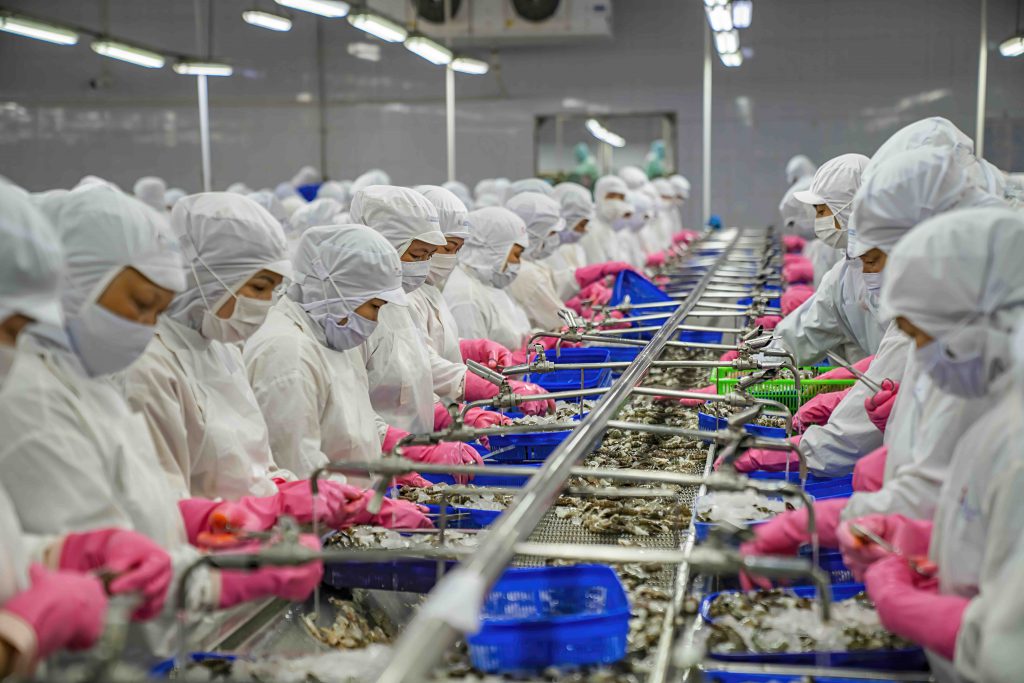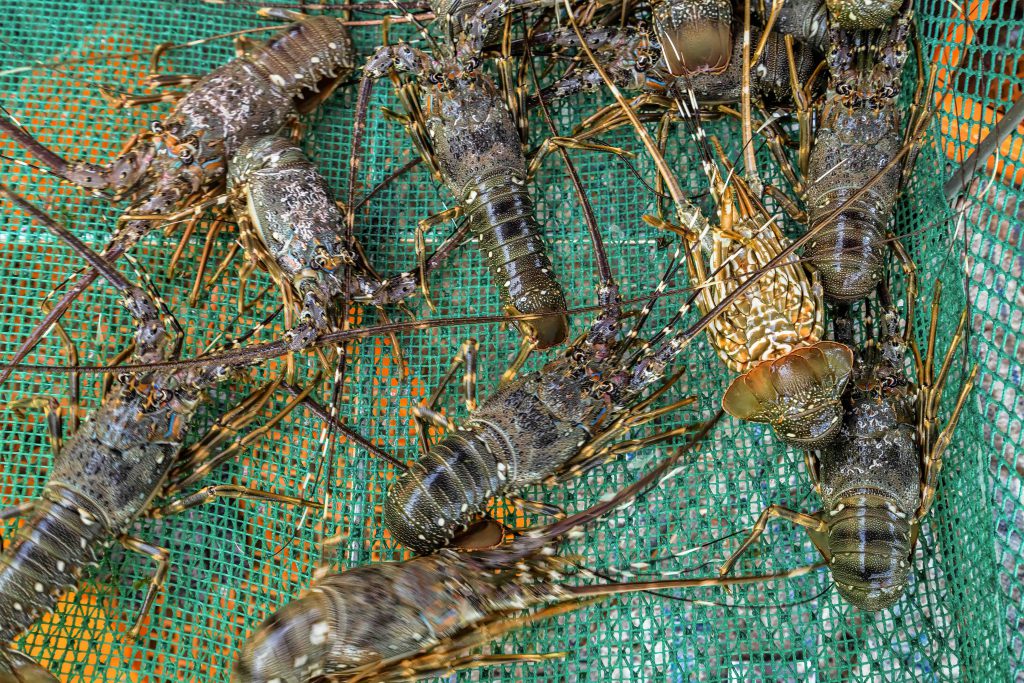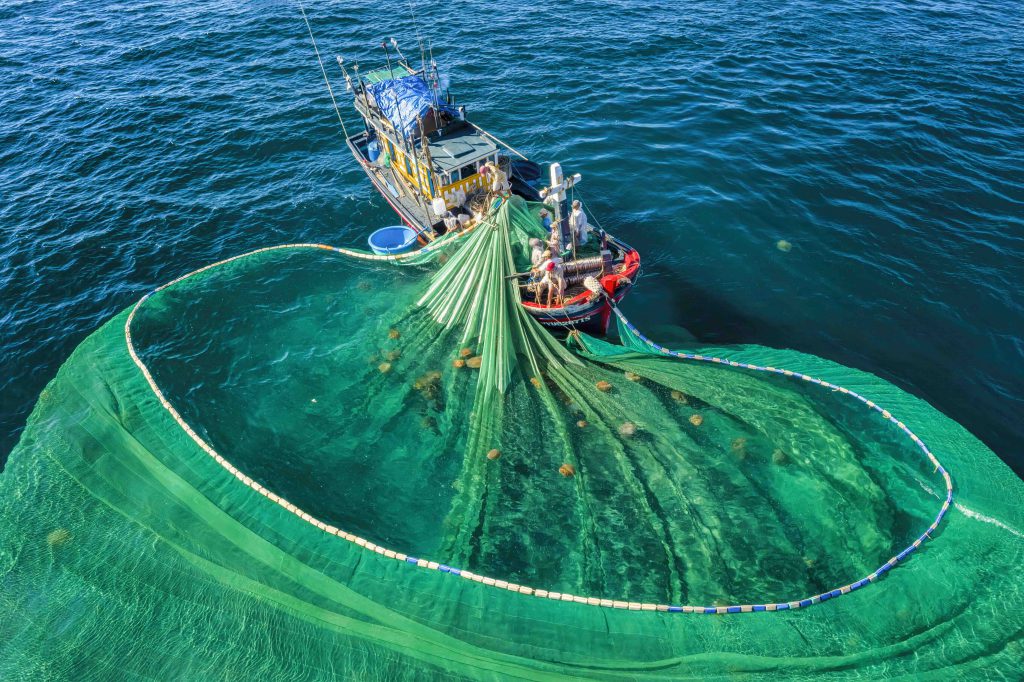Story: Anh Nguyen
Photos: Quang Ngoc, Shutterstock
Vietnam’s seafood exports are currently ranked third in the world, with an annual export value ranging from USD 9 to 11 billion.
While recent media attention has focused on emerging agricultural export stars such as durian, banana, and pepper, seafood continues to hold a prominent position, accounting for approximately 16% of Vietnam’s total agricultural export revenue. The sector has made substantial contributions for decades, but its importance has become even more pronounced in recent years.

Securing a global top spot
Vietnam now ranks third among the world’s top seafood-exporting nations, behind only China and Norway, with annual export values ranging from USD 9 to 11 billion.
According to the Development of Vietnam’s Fisheries Sector report by the Directorate of Fisheries and the Fisheries Surveillance Authority, the country’s seafood production in 2024 reached 9.6 million tons – a 2% increase from 2023 (9.3 million tons) and a 14% rise compared to 2019 (8.42 million tons). Of this total, wild-catch output was 3.85 million tons (up 0.6% from 3.81 million tons in 2023), while aquaculture accounted for 5.75 million tons (up 4.0% from 5.54 million tons in 2023).
In addition to rising volume, the overall value of Vietnam’s seafood industry has followed a steady upward trend. The sector grew by 3.3% in 2020, and posted gains of 3.3% and 3.71% in 2022 and 2023, respectively. In 2024 alone, seafood exports generated over USD 10 billion – an increase of 12% compared to 2023. Within the broader agricultural sector, seafood accounted for 23.6% of agricultural GDP and contributed 16% to the record-breaking agricultural export value of USD 62.5 billion. With these strong figures, seafood has firmly established itself as one of Vietnam’s leading export products, not only in agriculture but across the national export portfolio.

Shrimp and pangasius remain industry highlights
Among Vietnam’s core seafood exports, shrimp and pangasius continue to shine as billion-dollar commodities, driving this sector’s overall growth. Specifically, shrimp exports reached USD 3.9 billion in 2024, accounting for 38% of the total and marking a 14% increase compared to 2023. Major markets such as the United States, the European Union, Japan, and China remain highly promising destinations for Vietnamese shrimp.
According to the Vietnam Association of Seafood Exporters and Producers (VASEP), shrimp exports to China and Hong Kong (China) maintained double-digit growth rates in November 2024 alone. Shipments to Japan, the US, and South Korea also recorded positive growth.
Alongside shrimp, pangasius also contributed significantly to export growth. In 2024, pangasius export revenue reached USD 2 billion, up 8.9% from 2023. Notably, exports of Vietnamese pangasius to China totaled over USD 580 million in 2024. In the US market, Vietnamese pangasius products netted USD 345 million, representing a 27% year-on-year increase.
With these promising results, the seafood sector is expected to maintain strong momentum in 2025, potentially reaching an export turnover of USD 10.5 billion.

In addition to shrimp and pangasius, VASEP reports that other product groups, such as squid and octopus, shellfish, and crabs, are also showing strong potential. In particular, shellfish and crabs have recorded impressive growth, fueled by soaring demand from the Chinese market.
Multiple advantages to sustain strong growth
Vietnam’s seafood sector is well-positioned for continued strong growth, supported by a range of competitive advantages, including a long coastline, an extensive network of rivers and lakes, and a strategic location bordering China, a market no agricultural product can afford to ignore.
In recent years, the seafood processing industry has made significant strides. Companies have invested heavily in technology and expanded their product portfolios to boost competitiveness. As a result, deeply processed products with high added value are gaining traction in global markets. Items such as breaded pangasius, processed squid, and frozen octopus have seen strong growth, reflecting rising demand for convenient, high-quality food products in major export destinations.
At the same time, an increasing number of Vietnamese enterprises are meeting the strict food hygiene and safety standards required by demanding markets such as the EU, the US, South Korea, Brazil, and Australia. This has been a key driver in boosting both the value and export turnover of Vietnam’s seafood industry.

Moreover, the expansion of aquaculture, both in terms of volume and farming area, has created a robust raw material base for increased production and exports. In recent years, aquaculture farming has consistently covered more than 1 million hectares.
Vietnam has also become increasingly adept at leveraging the benefits of Free Trade Agreements (FTAs). The country has implemented various measures to meet the strict requirements of global markets, such as deploying an electronic catch documentation and traceability system (eCDT). Vietnam has signed 16 FTAs and is negotiating three more. According to the Vietnam Association of Seafood Exporters and Producers (VASEP), next-generation agreements like the EVFTA (with the EU) and CPTPP are instrumental in lowering export tariffs, improving market access, and boosting competitiveness for Vietnamese seafood.
Despite global uncertainties, Vietnam’s seafood exports continue to demonstrate remarkable resilience and adaptability. Despite remaining challenges, including climate change, rising competition, protectionist trade policies, and technical trade barriers, the industry is expected to achieve another year of impressive growth in 2025.










